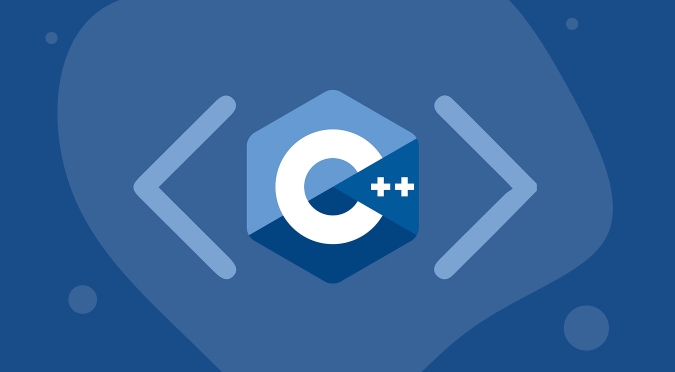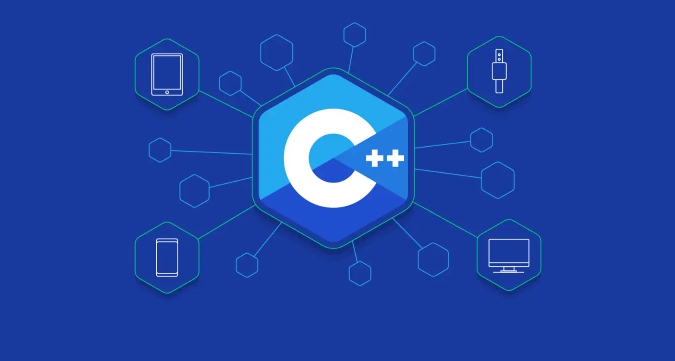What is the Standard Template Library (STL) in C ?
Jul 01, 2025 am 01:17 AMC STL is a set of general template classes and functions, including core components such as containers, algorithms, and iterators. Containers such as vector, list, map, and set are used to store data. Vector supports random access and is suitable for frequent reading; list insertion and deletion are efficient but access is slow; map and set are based on red and black trees, and automatic sorting is suitable for fast searches. Algorithms such as sort, find, copy, transform, and accumulate are commonly used to encapsulate them, and act on the iterator range of the container. The iterator acts as a bridge connecting containers to algorithms, supporting traversal and accessing elements. Other components include function objects, adapters, allocators, which are used to customize logic, change behavior, and memory management. STL simplifies C programming, improving efficiency and code reuse.

C's Standard Template Library (STL) is a common set of template classes and functions used to implement common data structures and algorithms. It is not an integral part of the C language itself, but it is widely integrated into the standard library and has become an important tool for modern C programming.

Container: "box" that stores data
The most core part of STL is containers, which are used to organize and store different types of data. Commonly used containers include vector , list , map , set , etc.

-
vectoris similar to dynamic arrays, supports random access, and is suitable for frequent read scenarios. -
listis a two-way linked list, with high insertion and deletion efficiency, but slow access to elements. -
mapandsetare based on red and black trees and are automatically sorted, suitable for occasions where quick searches and unique key values ??are needed.
For example: If you are dealing with a set of changing student scores, using vector may be more convenient than fixed-length arrays:
std::vector<int> scores = {85, 90, 78};
scores.push_back(93); // Add new scoreDifferent containers have different scenarios. When choosing, you should consider the access frequency and the cost of insertion and deletion operations.

Algorithm: Commonly used package
STL provides a rich set of algorithms (Algorithms), such as sorting, searching, copying, transformation, etc. These algorithms usually act on the iterator range of the container.
For example, sorting vectors using std::sort is very simple:
std::sort(scores.begin(), scores.end());
Common algorithms include:
-
find: Find whether an element exists -
copy: Copy the contents of one container to another -
transform: performs some kind of transformation operation on each element -
accumulate: sum or custom accumulation operations
The benefit of these algorithms is that they have been optimized and can be used with any compatible container, reducing the work of re-making wheels.
Iterator: a bridge connecting containers and algorithms
Iterators are objects used in STL to traverse container elements, a bit like pointers. It allows the algorithm to not know the internal structure of the specific container, but only needs to access the elements through an iterator.
You can think of an iterator as a "page turner" and view data page by page. for example:
for (auto it = scores.begin(); it != scores.end(); it) {
std::cout << *it << " ";
}STL supports multiple types of iterators, such as forward, reverse, constant iterators, etc. Understanding their differences can help write more efficient and secure code.
Other components: adapters, functors, allocators, etc.
In addition to the above three core parts, STL also includes some auxiliary components:
- Function Objects (Functors) : Objects that can be called like functions, often used to customize sorting or operation logic.
- Adaptors : Change the behavior of existing components, such as
stackorqueue, is adeque-based adapter. - Allocators : Responsible for memory management, and by default, it rarely needs to be implemented by itself.
Although these components are not as frequently used in daily development as containers and algorithms, they come in handy in advanced applications or performance optimization.
In general, STL provides efficient, flexible, and reusable data structures and algorithms, greatly simplifying C development work. Mastering its basic usage is a key step to becoming a qualified C programmer. Basically that's it.
The above is the detailed content of What is the Standard Template Library (STL) in C ?. For more information, please follow other related articles on the PHP Chinese website!

Hot AI Tools

Undress AI Tool
Undress images for free

Undresser.AI Undress
AI-powered app for creating realistic nude photos

AI Clothes Remover
Online AI tool for removing clothes from photos.

Clothoff.io
AI clothes remover

Video Face Swap
Swap faces in any video effortlessly with our completely free AI face swap tool!

Hot Article

Hot Tools

Notepad++7.3.1
Easy-to-use and free code editor

SublimeText3 Chinese version
Chinese version, very easy to use

Zend Studio 13.0.1
Powerful PHP integrated development environment

Dreamweaver CS6
Visual web development tools

SublimeText3 Mac version
God-level code editing software (SublimeText3)

Hot Topics
 The difference between programming in Java and other languages ??Analysis of the advantages of cross-platform features of Java
May 20, 2025 pm 08:21 PM
The difference between programming in Java and other languages ??Analysis of the advantages of cross-platform features of Java
May 20, 2025 pm 08:21 PM
The main difference between Java and other programming languages ??is its cross-platform feature of "writing at once, running everywhere". 1. The syntax of Java is close to C, but it removes pointer operations that are prone to errors, making it suitable for large enterprise applications. 2. Compared with Python, Java has more advantages in performance and large-scale data processing. The cross-platform advantage of Java stems from the Java virtual machine (JVM), which can run the same bytecode on different platforms, simplifying development and deployment, but be careful to avoid using platform-specific APIs to maintain cross-platformity.
 How to reduce the use of global variables in C?
May 23, 2025 pm 09:03 PM
How to reduce the use of global variables in C?
May 23, 2025 pm 09:03 PM
Reducing the use of global variables in C can be achieved by: 1. Using encapsulation and singleton patterns to hide data and limit instances; 2. Using dependency injection to pass dependencies; 3. Using local static variables to replace global shared data; 4. Reduce the dependence of global variables through namespace and modular organization of code.
 c: What does it mean? Data bit c Median domain definition colon usage
May 23, 2025 pm 08:48 PM
c: What does it mean? Data bit c Median domain definition colon usage
May 23, 2025 pm 08:48 PM
In C, the bit field is a structure member that specifies the number of bits, used to save memory and directly manipulate hardware. Example: structMyStruct{inta:2;intb:5;intc:1;}. The advantage of bit domains is memory savings, but there are cross-platform issues, access restrictions and assignments that require caution. Example of usage: structStateMachine{unsignedintpower:1;unsignedintmode:2;unsignedinterror:1;}. Performance recommendations include arranging bit fields by size, avoiding overuse and adequate testing.
 Usage of ? in c Analysis of three-item operator instance in c
May 23, 2025 pm 09:09 PM
Usage of ? in c Analysis of three-item operator instance in c
May 23, 2025 pm 09:09 PM
The syntax of the trigonometric operator in C is condition?expression1:expression2, which is used to select and execute different expressions according to the condition. 1) Basic usage example: intmax=(x>y)?x:y, used to select the larger value in x and y. 2) Example of nested usage: intresult=(a>0&&b>0)?a b:(a==0||b==0)?a*b:a-b, used to perform different operations according to different conditions. 3) Error handling example: std::stringerrorMessage=(errorCode==0)?"Successful&quo
 Usage of c Typical application scenarios of logical non-operators
May 23, 2025 pm 08:42 PM
Usage of c Typical application scenarios of logical non-operators
May 23, 2025 pm 08:42 PM
The usage of logical non-operator! in C includes: 1) Basic usage: inverse the Boolean value; 2) Conditional judgment: simplify the code, such as checking whether the container is empty; 3) Loop control: processing elements that do not meet the conditions; 4) Function return value processing: determine whether the operation has failed. Pay attention to potential pitfalls such as pointer processing and operator priority when using!, but it can help write more concise and efficient code.
 How to create custom filters for cxImage in Debian
May 16, 2025 pm 08:51 PM
How to create custom filters for cxImage in Debian
May 16, 2025 pm 08:51 PM
Create a custom filter for cxImage in the Debian system. You can use the following steps: Prepare to install the cxImage library: Confirm that the cxImage library is installed. If it has not been installed, please use the following command to install: sudoapt-getupdatesudoapt-getinstalllibcximage-dev Install the development tool: Some development tools need to be installed to compile C/C code: sudoapt-getinstallbuild-essential Write custom filter creation filter code: Create a new C/C file, such as custom_filter.cpp
 How to use the image rotation function of Debian cxImage
May 16, 2025 pm 08:57 PM
How to use the image rotation function of Debian cxImage
May 16, 2025 pm 08:57 PM
In the Debian system, you can follow the following steps: Installing the cxImage library First, make sure you have installed the cxImage library. If it has not been installed, you can install it through the following command: sudoapt-getupdatesudoapt-getinstalllibcximage-dev Write the code Next, write a simple C program to show how to use the cxImage library for image rotation. Here is a sample code: #include#includein
 What is the use of python multi-domain application
May 21, 2025 pm 09:51 PM
What is the use of python multi-domain application
May 21, 2025 pm 09:51 PM
Python is widely used in data science, web development, automation, finance, scientific computing and other fields. 1) Data Science: Use NumPy, Pandas, TensorFlow and other libraries to process data and build models. 2) Web development: Django and Flask frameworks quickly build websites. 3) Automation: Write scripts to automate tasks. 4) Finance: Quantopian and Zipline are used for quantitative transactions. 5) Scientific Computing: SciPy and Matplotlib are used for data analysis and visualization. Python's simplicity and readability make it ideal for multiple fields.






